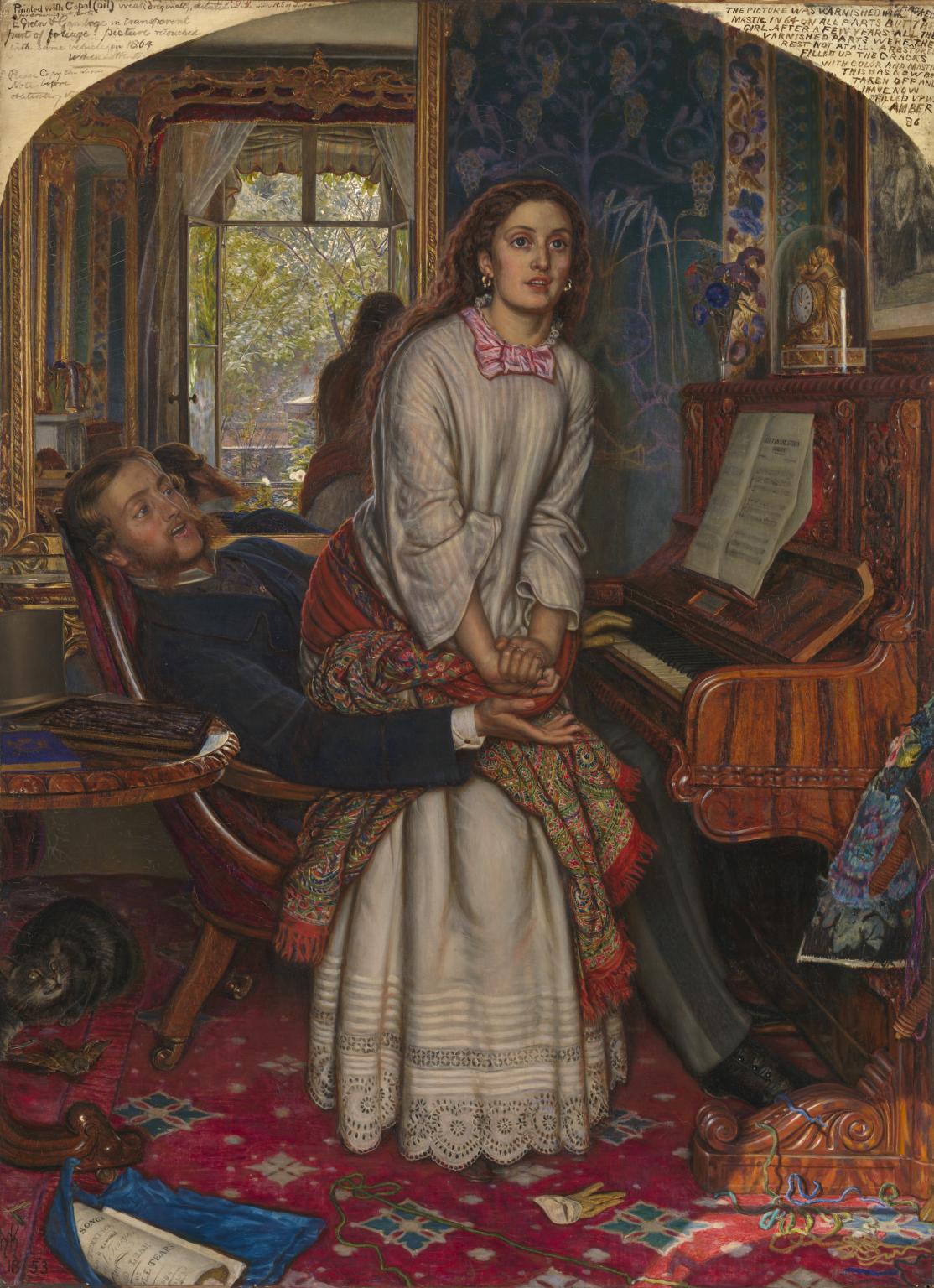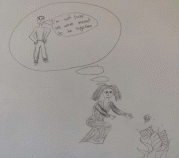Art Creation and Reflection
There are many types of art, and each person perceives them differently. Personally, I prefer portraits and still lives to other kinds of painting since these genres best represent the true shades of images and objects portrayed by artists. In this respect, the works of William Holman Hunt, a renowned English painter, are worth paying attention to due to their vivid color, symbolism, and a variety of details.
Inspiration Piece
The inspiration piece is William Holman Hunt’s “The awakening conscience,” painted in 1853 (Figure 1). The piece portrays a man and his mistress, who seems to have realized her low moral standards and decided to stop the filthy relationship with her married lover. The painting is rich in details and symbols, which makes it interesting to watch it many times and always find something new and exciting about it (“The awakening conscience,” n.d.). The painting demonstrates one of the typical features of Victorian society.

My Art Piece
When watching Hunt’s painting, I could not but think of how often people make mistakes in their relationships. Whereas the focus of the inspirational piece is the realization of one’s unethical conduct, I came up with the idea of a woman’s recognition of having been a victim of unfair treatment for too long. In my drawing, titled “The awakening mind,” I portrayed a girl burning love letters from her ex-boyfriend upon understanding that he was not as much in love with her as she expected (Figure 2). The girl looks rather sad and disappointed, but she has finally plucked up the courage to break up with the person who is not worth her. She recollects her boyfriend’s words as she is burning her memories of their happy times.

Connection
The thematic connection between the two pieces is in them both concerning relationships between a man and a woman. In both images, the lady suddenly realizes how wrong she has been behaving and understands that she does not want to be treated inappropriately by her lover. The difference is in the level of connection between the two couples. In Hunt’s painting, the woman is a mistress who feels deeply sorry for having been a part of a filthy scheme, in which the man had been betraying his wife. In my drawing, the girl is not a mistress, but she is also unhappy in her own way. In both pieces, the woman is the one making the decision to quit the self-destructive relationship.
The mediums employed to create the two pieces are not the same. Hunt utilized oil paints, whereas I only had a pencil at my disposal. The medium has a considerable effect on the viewer since one can create a deeper meaning by means of paints than by using a pencil. The formal elements of design are also dissimilar in the two images. The color, pattern, and composition of Hunt’s painting are much richer than those of my drawing. The lines and shapes in Hunt’s image are more sophisticated and professional than mine. The tones are also much better visualized on Hunt’s painting as the artist managed to create the play of light and shadow, which helps the viewer to perceive the effect of the painting better. However, despite my work being rather plain and unprofessional, I managed to communicate the meaning I implied to convey.
References
The awakening conscience. (n.d.). Web.
Hunt, W. H. (1853). The awakening conscience [painting].